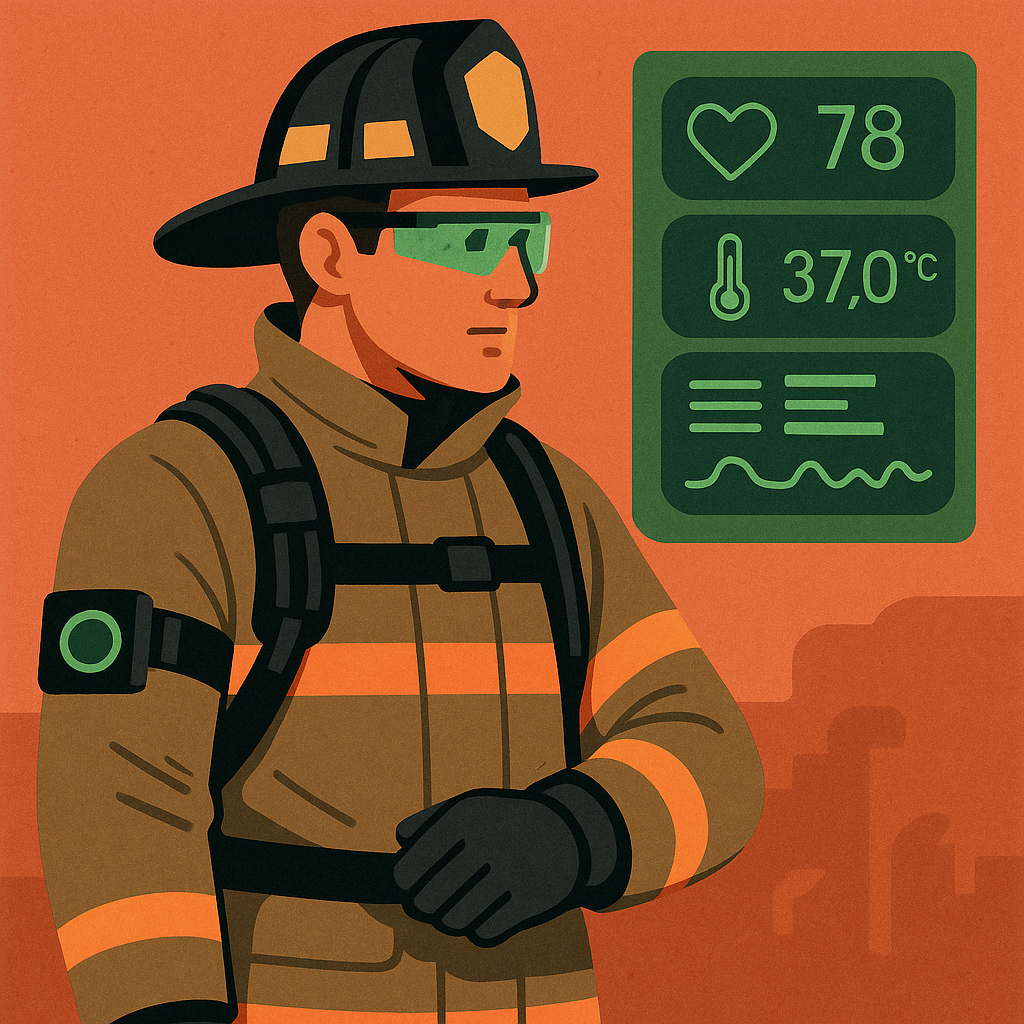Firefighting is an incredibly strenuous job – and overexertion and stress consistently rank as the number one cause of firefighter line-of-duty deaths. To tackle this silent threat, fire departments are turning to smart personal protective equipment (PPE) and biometric monitoring devices that watch firefighters’ vital signs in real time. These wearables, integrated into gear or worn as armbands, continuously measure metrics like heart rate, body temperature, respiratory rate, and exertion levels. The goal is to warn incident commanders and the firefighters themselves before a medical emergency (like a cardiac event or heat stroke) occurs.
One example is the FireHUD BioTrac system (now SlateSafety BioTrac Band). It’s a rugged armband sensor that tracks a firefighter’s heart rate, core temperature, and exertion, and uploads the data live to a cloud platform. If any readings spike into danger zones, the system sends alerts so the firefighter can be pulled out or rested. This technology earned a spot in TIME’s Best Inventions for helping address firefighters’ heat stress – since its inception, it’s been adopted by 35+ fire departments as well as the U.S. Army, Navy, and Air Force. Commanders using BioTrac can view each team member’s vitals on a tablet dashboard, even from outside a burning building, enabling them to rotate crews proactively the moment signs of overexertion appear.
The concept of Smart PPE isn’t limited to health vitals. Environmental sensors are also being embedded to detect toxic gas exposure and temperature spikes. For instance, a sensor on a firefighter’s gear might detect a sudden temperature jump that precedes a flashover, giving an early warning to evacuate. Likewise, motion sensors (gyroscopes, accelerometers) in wearables can tell if a firefighter has fallen or stopped moving, automatically alerting the Rapid Intervention Team to a potential downed firefighter. All this data can be transmitted over a broadband connection (like FirstNet) to ensure the incident command post has a full picture of both where firefighters are and how they are feeling.

The early implementations of these tech have already saved lives. There are reports of firefighters being pulled from the line just before collapsing, thanks to biometric alerts. Beyond emergency scenes, biometric wearables are also used in training to ensure recruits don’t exceed safe exertion levels. Ultimately, smart PPE is ushering in a new era of firefighter safety – one where we can aim for zero preventable deaths. By continuously monitoring health and exposure, these innovations enable firefighters to push hard when lives depend on it, with a safety net that watches over them in those intense moments.
Sources: Industrial Fire World on smart PPE trendsindustrialfireworld.comindustrialfireworld.com; TIME on SlateSafety BioTrac Band (formerly FireHUD); FireRescue1 on FireHUD device functions; FirstNet Authority blog on biometrics potential.